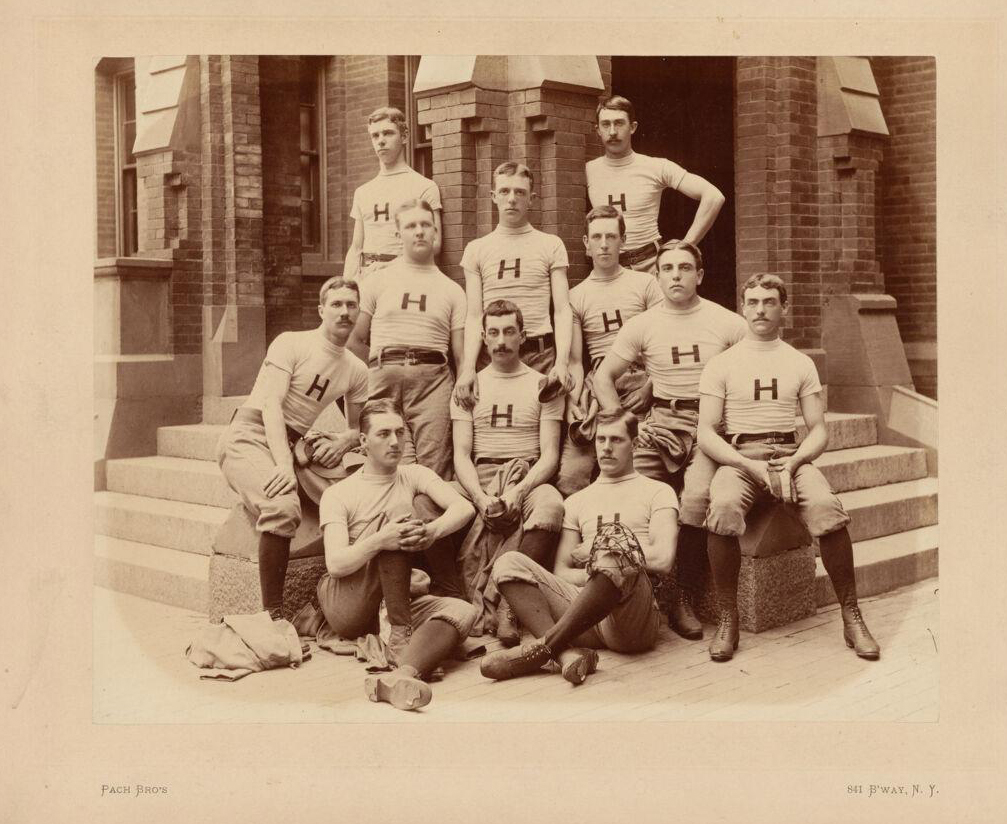
Harvard University Baseball Team, 1884
Harvard University Archives
Sports Helmets, Catcher’s Mask
Harvard has a long history of innovation and leadership in sports medicine
Augustus Thorndike, A.B. 1884, M.D. 1888, at the Massachusetts General Hospital is considered the father of sports medicine because he recognized the special health risks faced by athletes. Because he understood those, he developed the first helmets to be used in football and hockey.
The consistent use of such protective gear and the provision of specialized medical care for athletes is a relatively recent development. The first piece of protective equipment in American sports, the baseball catcher’s mask, was developed at Harvard. The mask was worn by James A. Tyng, A.B. 1876, in either a game between Harvard and the Boston Red Stockings that year or between Harvard and the Live Oaks team from Lynn in 1877.
Catchers had started to inch closer to home plate to better field bunts, throw out base runners, and frame pitches. Since Tyng had been struck by several foul tips in the head and face, he had become “more or less timid,” according to Harvard baseball manager Frederick W. Thayer, A.B. 1878, who designed the first catcher’s mask for Tyng. The mask was modeled on a fencing mask with eyes holes cut into it, and it was made by a Cambridge tinsmith.
There have been many variations in the design of catchers’ masks to maximize facial protection, minimize obstruction to visibility, and minimize weight. The latest designs closely resemble the goalie’s mask in hockey.




